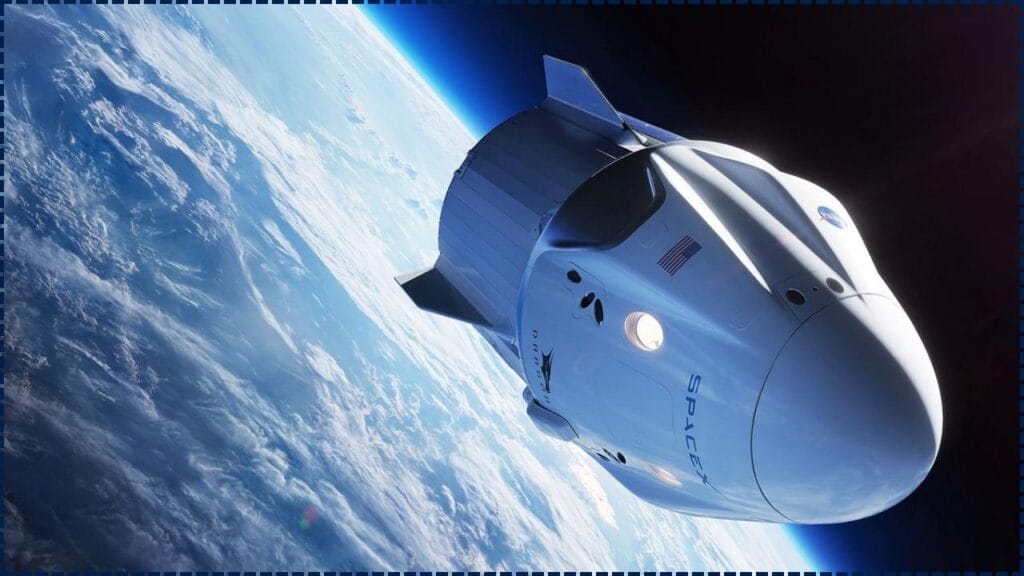SpaceX Dragon capsule’s return to Earth on May 24, 2025, gave Southern California more than just a cool story—it gave them a sonic boom that rattled windows and shook up late-night quiet from L.A. to Oceanside. While some thought it was an earthquake, others knew they were witnessing a sound barrier-breaking moment in modern spaceflight.

That boom? It came from SpaceX’s Dragon capsule streaking back through the atmosphere after wrapping up a successful cargo mission to the International Space Station (ISS). Here’s the full scoop—what happened, why it matters, and what you should know for next time something like this shakes your walls.
SpaceX Dragon Capsule’s Return to Earth Results in Sonic Boom
| Event | Details |
|---|---|
| Date & Time | May 24, 2025, ~10:44 p.m. PT |
| Sonic Boom Heard In | Los Angeles, San Diego, Santa Clarita, Inland Empire, and surrounding areas |
| Capsule Mission | Commercial Resupply Services mission (CRS) to ISS with 6,700 lbs of cargo |
| Landing Site | Pacific Ocean near Oceanside, California |
| Crew Onboard | None—this was an uncrewed return flight |
| Sonic Boom Cause | Supersonic reentry of the Dragon capsule during atmospheric descent |
The SpaceX Dragon capsule’s return and sonic boom gave Southern Californians an unexpected but awesome reminder: space exploration is happening all around us. What once took government programs decades now happens in months—and you can watch it all unfold from your backyard.
Next time your windows rattle late at night, don’t panic. Just look up. A spacecraft might be coming home.
What Caused the Sonic Boom?
The sonic boom heard across Southern California was no accident. It happened because the Dragon capsule, built by SpaceX, was traveling faster than the speed of sound as it reentered Earth’s atmosphere. When something goes that fast, it compresses air in front of it, creating shock waves that we hear as a loud boom.
Think of it like the crack of a whip—just at 17,000 mph.
Usually, folks in California don’t hear this type of sound unless a military jet buzzes by or a rare earthquake sets things rumbling. But with commercial space travel picking up, sonic booms might become more common.
What Was the Dragon Capsule Doing in Space?
SpaceX’s Commercial Resupply Services (CRS) mission for NASA had the Dragon capsule delivering:
- 6,700 pounds of cargo to the International Space Station
- Scientific research including plant studies, medical experiments, and tech demos
- Supplies like food, clothing, tools, and backup systems for astronauts
It undocked from the ISS on May 23, began a controlled descent, and splashed down safely in the Pacific less than 24 hours later. All part of SpaceX’s growing role in keeping the space station stocked.
“Dragon has completed another successful mission,” said NASA’s press team. “And this sonic boom? Just the capsule saying ‘I’m home.’”
How SpaceX Handles Reentry
When a SpaceX capsule returns to Earth, it undergoes a high-speed dive through the atmosphere. The process includes:
1. Deorbit Burn
The spacecraft fires thrusters to leave orbit and start falling toward Earth.
2. Atmospheric Entry
The capsule plummets through the upper atmosphere at up to 17,000 mph. Air friction slows it down—and creates a lot of heat and noise (cue: sonic boom).
3. Parachute Deployment
Once it’s slowed to safe speeds, parachutes deploy to guide it gently to the ocean.
4. Splashdown and Recovery
It splashes into the sea, where teams retrieve it via boat and bring it to shore. In this case: off the coast of Oceanside, California.
What Locals Heard and Felt
Reports flooded social media Saturday night. Some folks said:
- “It sounded like a thunderclap or a car crash.”
- “My windows rattled. I thought it was an earthquake!”
- “I ran outside because I thought something hit my roof.”
Many Southern Californians weren’t aware that a reentry was planned, so the boom took them by surprise. Even though SpaceX posted a heads-up online, it wasn’t widely circulated.
Pro tip: Follow @SpaceX and @NASA on X (formerly Twitter) to catch these notices in real time.
Are Sonic Booms Dangerous?
Not really, but they can be startling.
Here’s What You Should Know:
- Sonic booms won’t break windows (unless extremely close or amplified by terrain).
- They’re brief, usually just a few seconds long.
- Pets may be scared, but it’s not harmful.
- If you hear one, it likely means something awesome just happened overhead.
And no, you’re not losing your mind. Sonic booms are rare in cities—but becoming more common thanks to returning spacecraft.
A Big Win for NASA and SpaceX
This successful return highlights the value of public-private partnerships in space. NASA relies on companies like SpaceX to:
- Deliver science and supplies to space
- Return experiments safely to Earth
- Cut costs by reusing spacecraft (Dragon is a reusable capsule)
It also frees NASA up to focus on moon and Mars missions.
“The more routine these cargo missions become, the closer we get to deep-space travel,” says Dr. Karen Whitmore, NASA Flight Operations lead.
What to Expect Next
NASA and SpaceX will continue running cargo runs every few months. They also partner on Crew Dragon missions, which send astronauts to and from the ISS.
Want to watch a launch? You can stream them live at:
- NASA TV
- SpaceX YouTube Channel
- NASA’s ISS Blog
Also, if you live in California, keep your ears open. The next sonic boom might be right above you.
FAQs On SpaceX Dragon Capsule’s Return to Earth Results in Sonic Boom
Q: What caused the boom?
A: The boom was caused by the Dragon capsule breaking the sound barrier during atmospheric reentry.
Q: Was anyone onboard?
A: Nope. This was an uncrewed cargo mission returning from the ISS.
Q: Where did it land?
A: In the Pacific Ocean, off the coast of Oceanside, California.
Q: How often does this happen?
A: Every few months during resupply or crew missions. Boom intensity depends on flight path.
Q: Is it dangerous?
A: No, just loud. No reports of damage or injuries were linked to the sonic boom.












